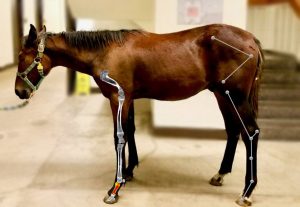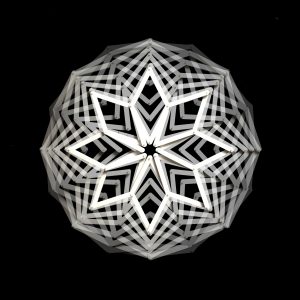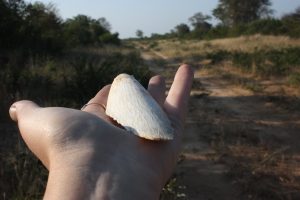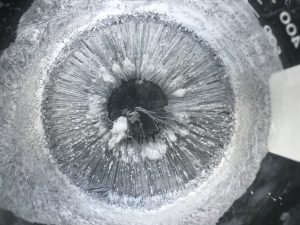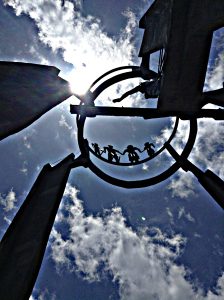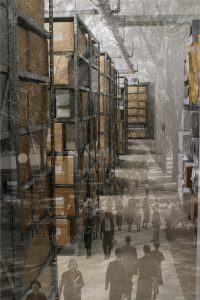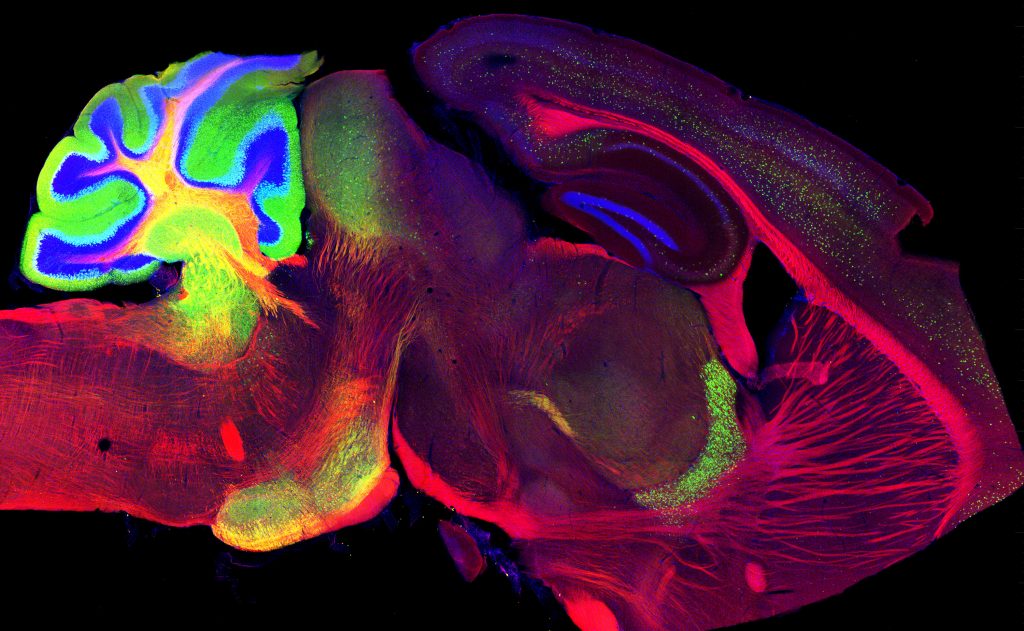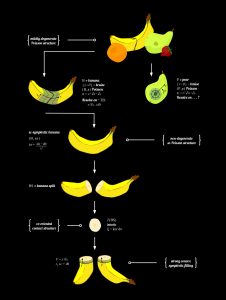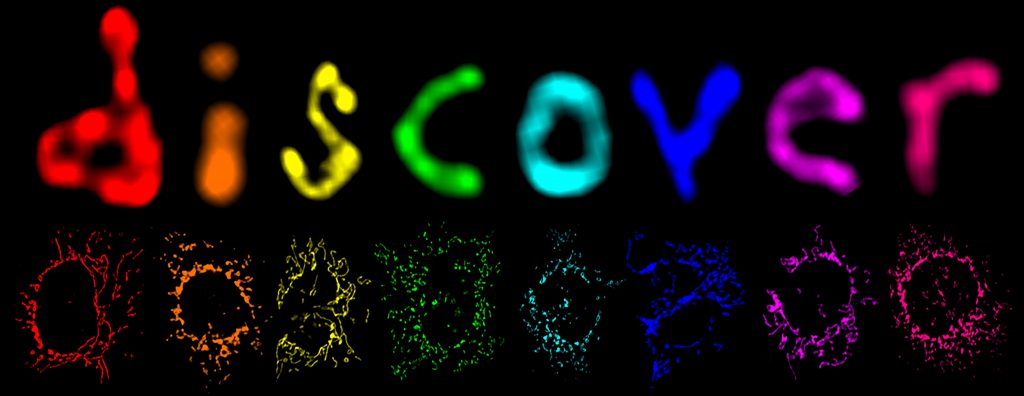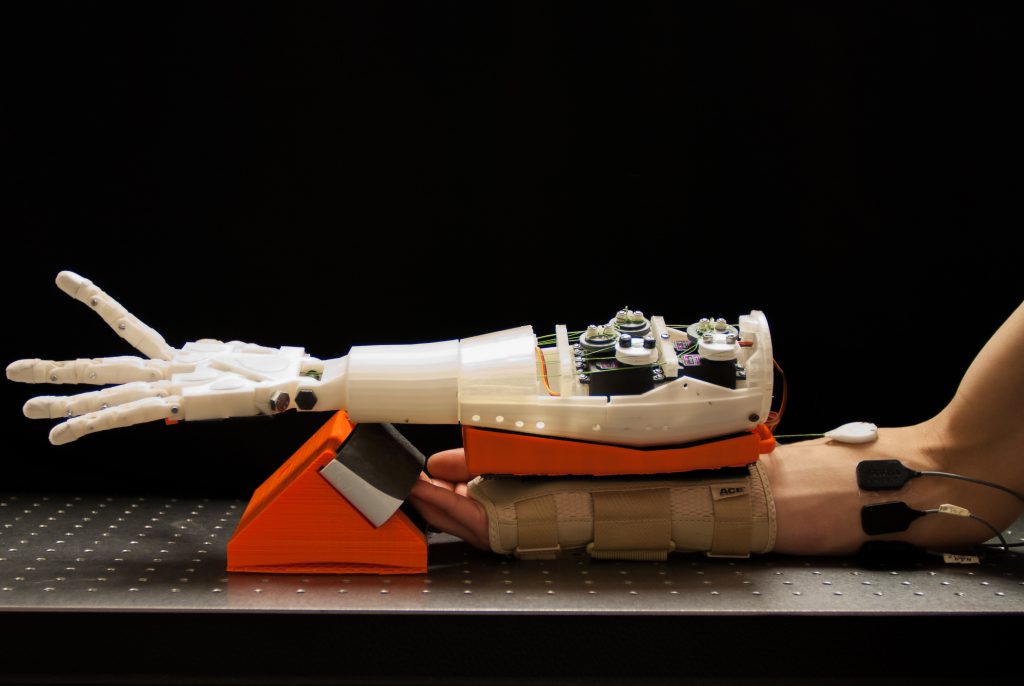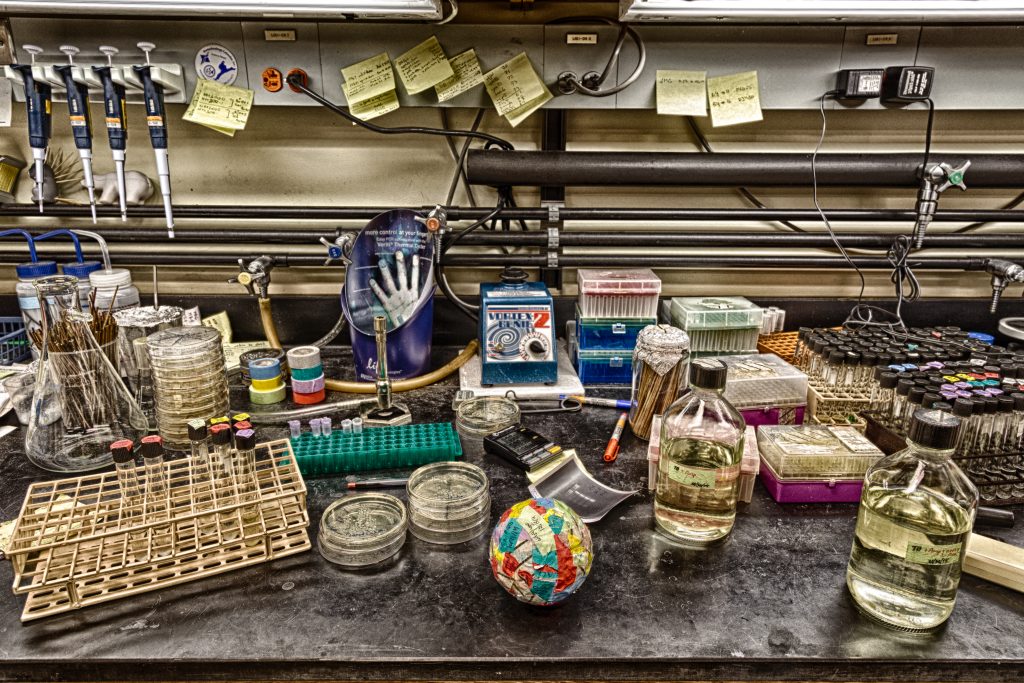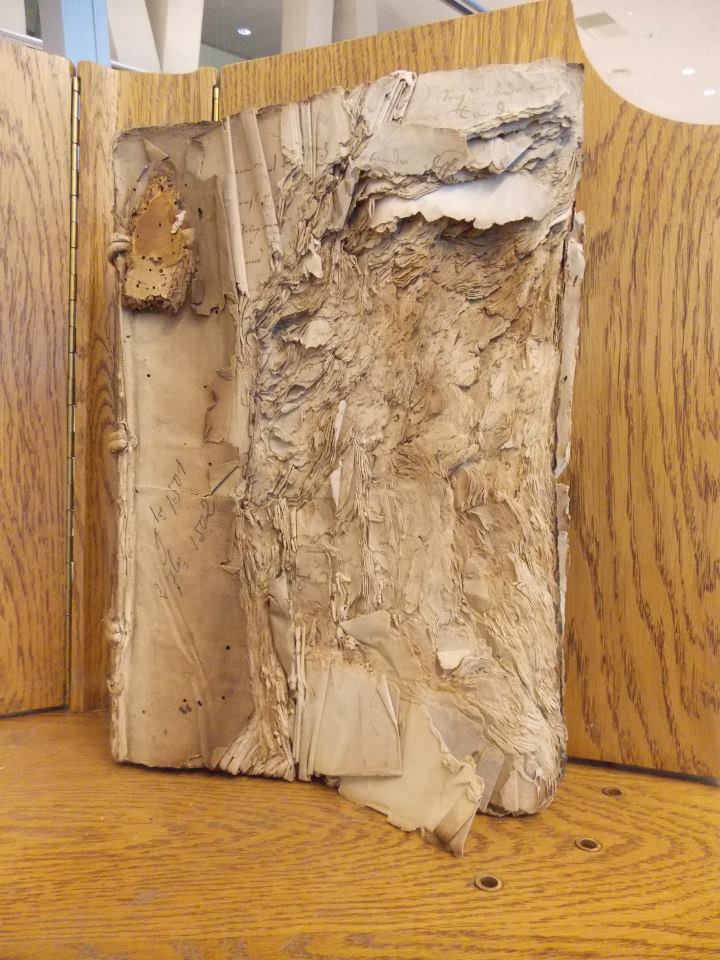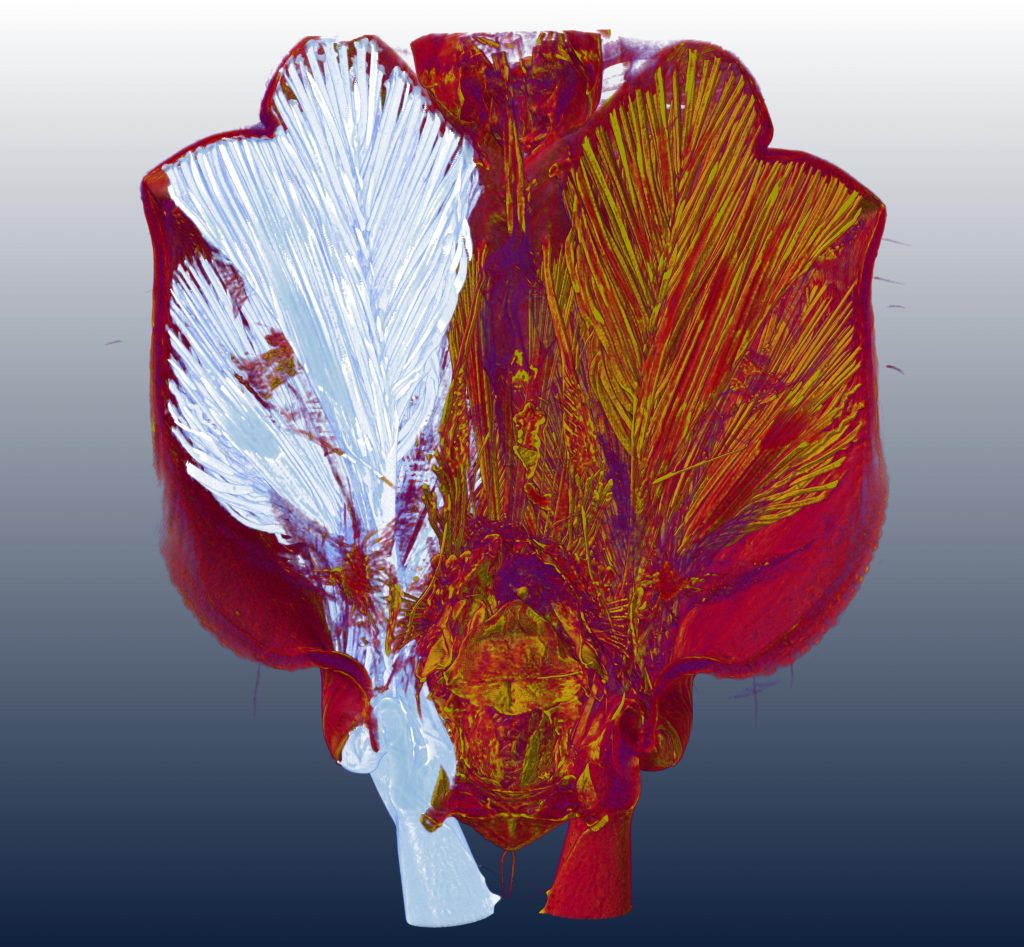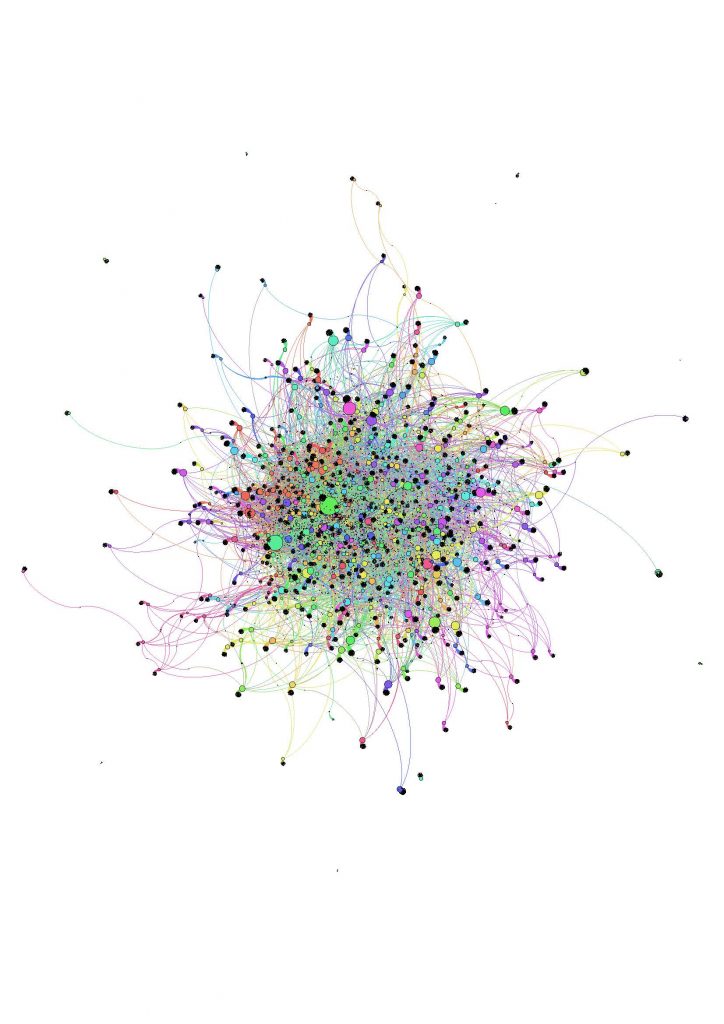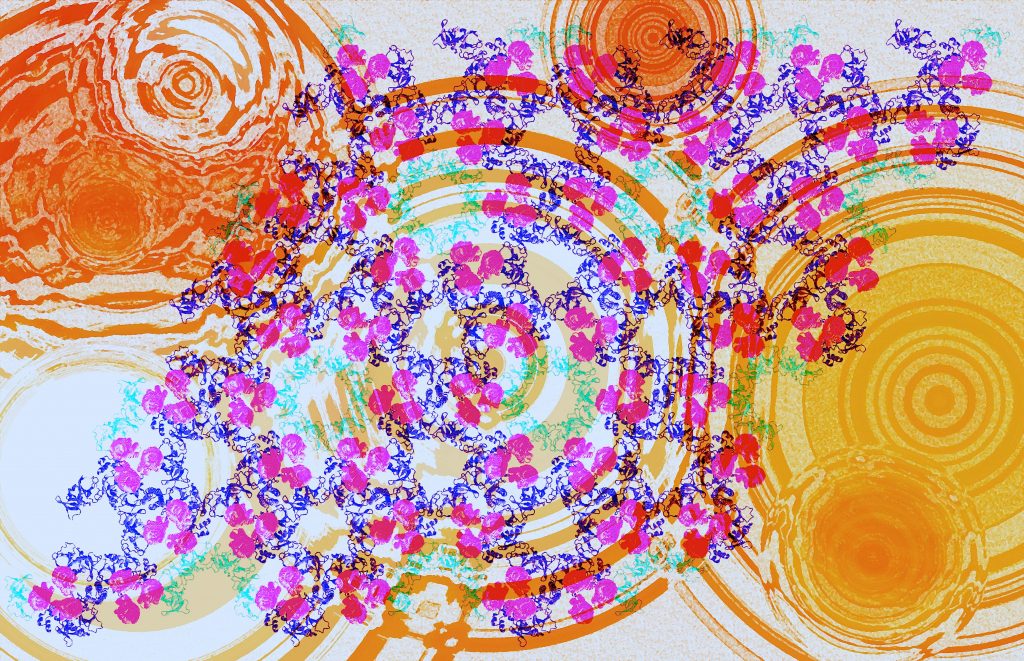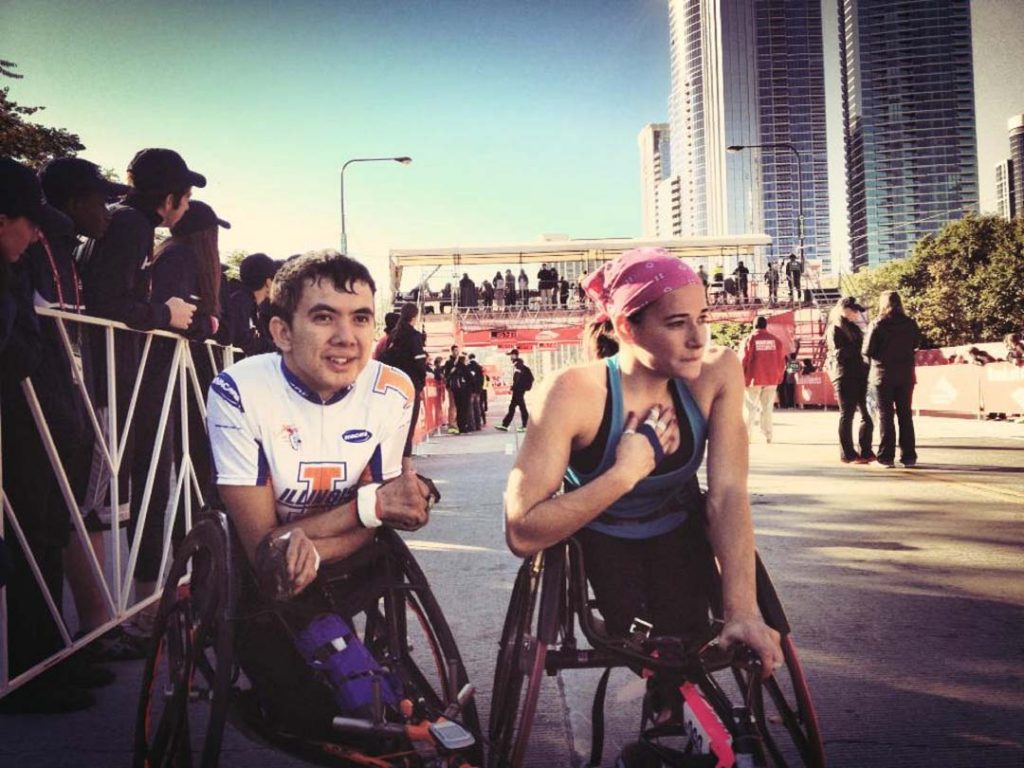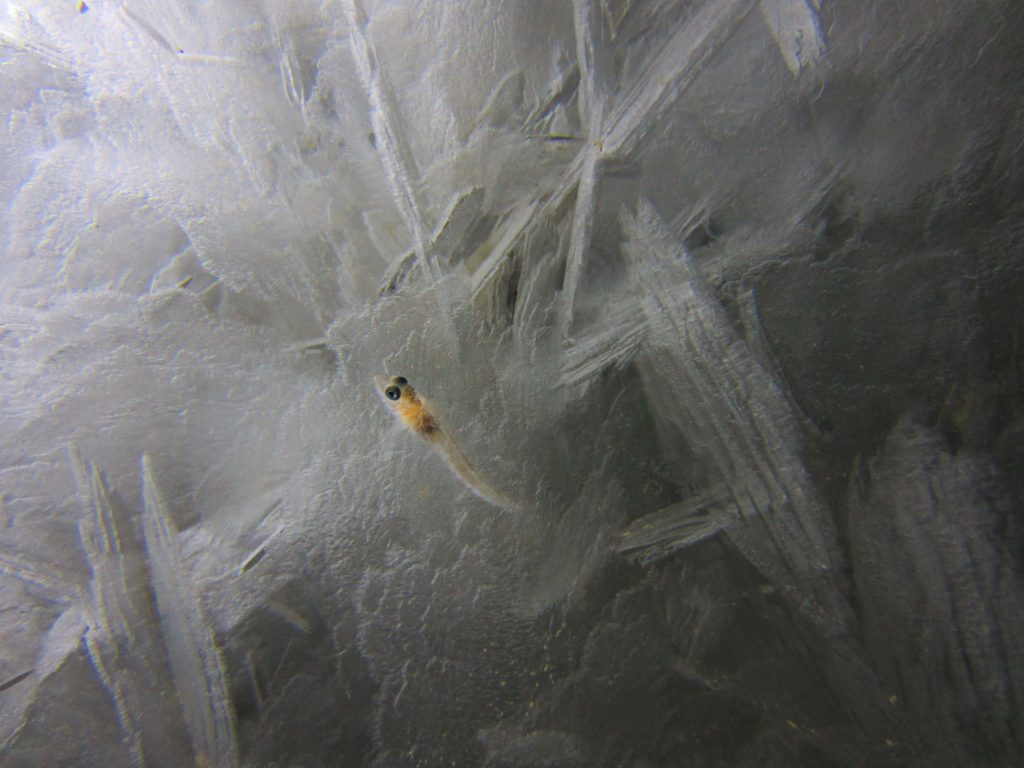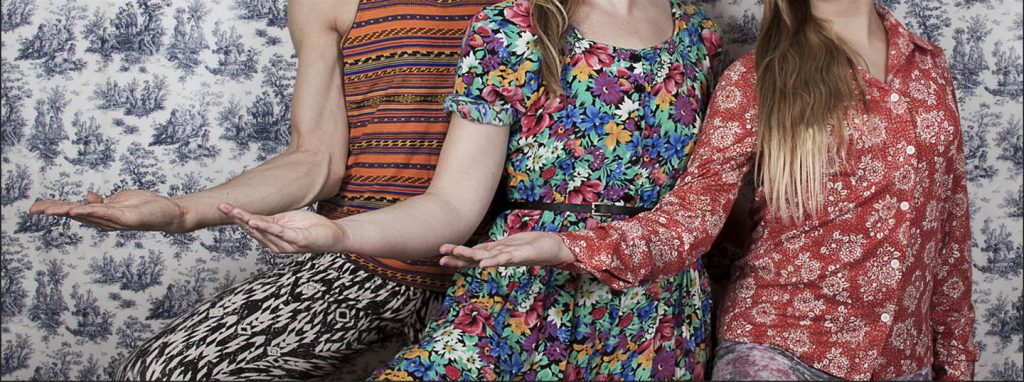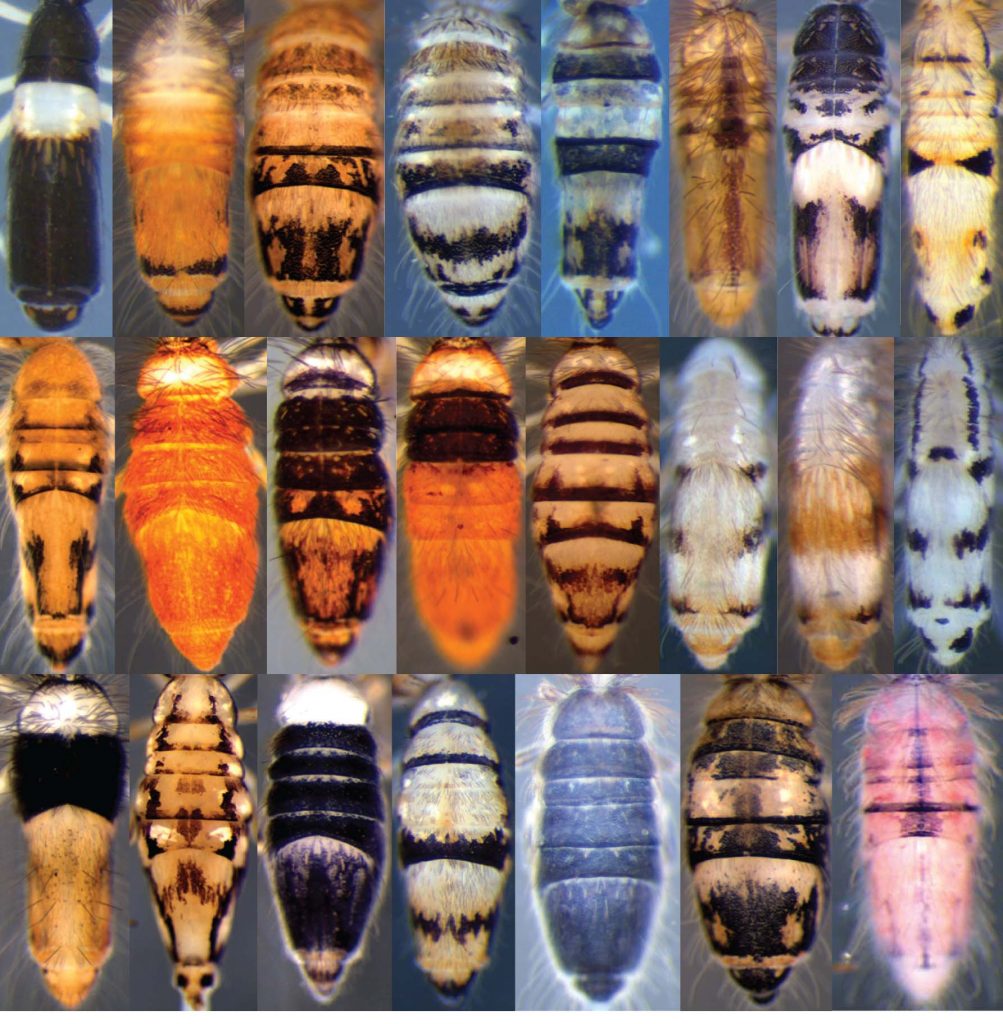All entries are on display in IDEALS. Below are links to announcements of the finalists.
2023 | 2022 | 2021 | 2020 | 2019 | 2018 | 2017 | 2016 | 2015
2023 Image of Research
Click here to see photos of the winning images!
2022 Image of Research
Click here to see photos of the winning images!
2021 Image of Research
Click here to see photos of the winning images!
2020 Image of Research
Click here to see photos of the winning images!
2019 Image of Research
Click here to see photos of the winning images! The winners of the 2019 Image of Research Competition were announced at a reception on April 3 where the entries of twenty-five semi-finalists were on display. Attendees voted for the People’s Choice Award. All of the entries are on display in IDEALS.
2018 Image of Research
The winners of the 2018 Image of Research Competition were announced at a reception on April 4 where the entries of twenty-five semi-finalists were on display. Attendees voted for the People’s Choice Award. All of the entries are on display in IDEALS.
The winners are:
1st Prize ($500 award)
Exploring how growth changes the way horse bones handle stress
by Sara G. Moshage (Mechanical Science and Engineering)
Ever wondered why horses have difficulty recovering from broken legs? Because they don’t have hands to use crutches! Horses weigh so much that they can only lay down for a few hours at a time, and standing on three legs for a long period of time causes other issues. A leading cause of fatality in sport horses (think jumpers and race horses) is fracture to a leg bone. Few of these fractures can be fixed. Understanding how bone grows and strengthens can help us better understand the fracture of such bones. My research looks at a specific lower leg bone, the proximal phalanx (the colorful bone), and how this bone grows during the first year of a horse’s life. Specifically, I am investigating whether the bone changes how it handles loads during growth. To do this, Illini Cyclone (the horse pictured) undergoes CT scans every few months. We also collect information on how he walks, so we can model the bone correctly (markers on back leg). The ultimate goal of this project is to propose a training strategy to horse trainers that lowers the likelihood of proximal phalanx fracture, saving as many horses as possible from an untimely demise.
2nd Prize ($300 award)
Kinetic Structures
by Yuan Liao (Architecture)
As an architecture student, I am trained to think about structures made of concrete, steel and wood. The structures I designed were typically static, i.e. motionless, until I came across a whole new world of kinetic structures. I learned that almost any form can be given mobility and deployed by calculating its geometry accurately and by strategically selecting the joints to allow rotation. As the first exercise in my graduate Structures course, I was asked to design an eight-sided expandable ring using scissor type units. The image shows the radial deployment and kinematic trajectory of the ring from the top view. It captures the intermediate position of the members and joints during motion. During radial motion, the position of the joints become more difficult to predict. This is called position analysis which is the fundamental step to more advanced mobility analysis of deployable structures. This project triggered my interest to researching about more complex deployable forms and thinking of how to apply them to the design of buildings. I am currently working on the design of emergency shelters using this kind of structures, which are light-weight, transportable and are rapidly deployable.
3rd Prize ($200 award)
The ivory poaching crisis: which way forward?
by Alida de Flamingh (Ecology, Evolution and Conservation Biology)
In 2017, it was estimated that there are less than a quarter of the expected number of elephants in Africa’s protected areas, yet poaching for ivory is a persisting pandemic. I picked up this piece of ivory, that had naturally chipped off the tip of an elephant tusk, while doing fieldwork in Botswana. In monetary value, I would guess that it was worth about U$500, but to some the value of this piece of ivory could falsely mean life or death. Luckily, it seems that the use of ivory for medicinal and recreational purposes has become less popular as more countries ban the use and trade of ivory. My PhD research focuses on finding long term conservation solutions for elephants in southern Africa. I use genetic and ecological methods in an integrative way to find conservation strategies that could hopefully assuage some the negative consequences of poaching. After photographing this piece of ivory, I threw it as far back into the bush as I could, nobody in this world needs an elephant tusk but an elephant. Camera: Canon EOS 450D, lens Canon EFS 18-55mm.
Honorable Mention ($100 award)
Observation
by Robin L. Holland (Veterinary Medical Scholars)
When one engages in research, we transition, from being a gatherer of knowledge, to a creator of knowledge. The process of research by its very nature pushes its explorers to question dogmas and pioneer new fields, and rewards those with a careful and observant eye. History has shown us that the greatest scientific discoveries often arise from simple observations made by diligent and curious individuals, observations that were overlooked by others blinded by expectations, predictions, and assumptions. The above image is far from any monumental discovery, only the crystallized remains of a salty solution in a beaker left aside and forgotten. Albeit insignificant, something as simple as a disregarded beaker can still remind us to always be watching for an unexpected finding in the most unexpected of places, and that anything can give rise to little moments of beauty, but only if we are willing to look and see what science is showing us.
People’s Choice Award ($100 award)
Visibility and the Disappeared: Exploring War, Memory and Family during El Salvador’s Civil War
by Beatriz Maldonado (Anthropology)
Do you remember me? What do you remember? How do you remember? This image is indicative of my affective results and reflections from my graduate research. My research focuses on Salvadorans and their disappeared family members during the country’s civil war. Throughout my research, I investigated values and meanings of family, material and/or oral representations of disappeared family members, and the temporal connections to memory and history. Throughout my research in ElSalvador, I visited many sites of collective and historic memory, sites where the victims of the disappeared exemplified their connections to remembrance and the body. For this image, the heteronormative family was iconic: it was significant to have the mother, the father, and the two children – for they were confirmations of a world, memory, family, and relationship as complete. Not only was the presence of family essential, but the accompanying regard of faith or a “holy being” was consistent as well. To consider the situation as heavenly or miraculous created an influential visibility onto the many narratives that were forcibly erased. It was the combination of hope and togetherness that pushed for a societal resistance of keeping the disappeared, alive.
Congratulations to all of the winners and thanks to everyone who entered the competition!
All of the entries from this year’s competition will soon be archived in IDEALS.
Many thanks to all of the participants in this year’s competition, and many thanks to the 2018 judges:
- Sarah Christensen (chair), University Library
- Annie Adams, Graduate College
- Nick Vasi, Institute for Genomic Biology
- Anna Marshall, Sociology
- Cara Finnegan, Communication
2017 Image of Research
The winners of the 2017 Image of Research Competition were announced at a reception on April 5 where the entries of twenty semi-finalists were on display. Attendees voted for the People’s Choice Award. All of the entries are on display in IDEALS.
The winners are:
1st Prize ($500 award)
Leanna Barcelona from Library and Information Science for “A Walk Down Memory Lane: Connecting History at the Student Life and Culture Archives”
The Student Life and Culture Archives, a unique facet to our library system at the University of Illinois, documents the life of students across campus to connect students of the past, present, and future through shared histories. Students of the University of Illinois have made, are making, and will continue to make history and the SLC archives is an access point for this history. My research uses this access point to create better understanding of how we are all connected through these shared histories, and how these shared histories shaped today. Specifically, my research looks at the histories of women and diverse communities on campus and their significance today. This image shows how students of the past live inside the Student Life and Culture Archives, their stories connecting Illini throughout time.
2nd Prize ($300 Award)
Chris Seward from Cell and Developmental Biology for “A Clear Mind”
Novel imaging techniques are necessary for examining whole brain protein expression patterns. Animal brains are large, complex structures that are difficult to image comprehensively. Neurons can be several inches long, while only a few nanometers in width and can branch in many directions connecting different regions of the brain. Laser light has trouble penetrating the dense, opaque tissue, which usually means brains can only be imaged in extremely thin slices that fail to image complete cell processes. To solve these problems, we have modified a technique called CLARITY that allows us to make a whole mouse brain completely transparent, while keeping fluorescent labels intact. This process allows us to visualize the connections of an intact brain at extremely high resolution in three dimensions. The goal of our study is to identify the proteins activated after a social stimulus, such as an intruder in an animal’s home. This image shows inhibitory neurons in green and neuron bundles expressing a protein that is triggered by a social experience in red. The blue background stain reveals important brain structures. These images allow us to connect the expression of a gene in one area of the brain, and follow it’s signal to other areas.
3rd Prize ($200 Award)
Elizabeth Weston from Social Work for “Alone No Longer”
As an MSW student, my heart reaches out to those who suffer the effects of Major Depressive Disorder (MDD). It has been estimated that around 14.8 million adults living in America are directly affected by this diagnosis. In short, symptoms of MDD include: energy loss, feelings of worthlessness, helplessness, and loneliness, extreme sadness, and fatigue. In a world surrounded by beauty, those suffering from MDD experience life in a different way. The darkness that covers the tiny farm house in this photo represents the individuals who feel the crippling effects of MDD. The beautiful colors that engulf the sky represent the rest of the world and those who might not understand Major Depressive Disorder and its effects of day-to-day life. By collaborating with mental health professionals, organizations,and various media outlets, we can bring light to the overlooked topic of Major Depressive Disorder in order to reduce stigma, provide help, and become a united front in the field of mental health.
Honorable Mention ($100 Award) and People’s Choice Award ($100)
Melinda Lanius from Mathematics for “The Banana of my Eye”
“The apple of my eye” is something I cherish above all others. As a mathematician I study minimally degenerate Poisson manifolds. You can think of a Poisson manifold as the skin of a fruit. Imagine an apple. You probably imagine a fruit with a shiny bright red facade. This pristine and perfect skin corresponds to a non-degenerate Poisson structure. As is true when picking out fruit at the grocery store, many Poisson manifolds aren’t quite perfect, but come with dents and bruises. Given a fruit (Poisson manifold), with a minor blemish, I use calculus to try and understand the damage. Sometimes I can model this degeneracy and incorporate the blemish into the geometry. For instance, I can handle the depicted banana, splitting it apart to understand subtle nuances in the geometry that other mathematicians weren’t able to see before. However, I am unable to grapple with the bruise on the pear. Through the lens of Poisson geometry, I come to see flawed fruit as perfect and pristine. While this fruit may appear bruised or defective to another mathematician, it becomes the apple – or perhaps I should say banana – of my eye.
Congratulations to all of the winners and thanks to everyone who entered the competition!
All of the entries from this year’s competition have been archived in IDEALS.
Many thanks to all of the participants in this year’s competition, and many thanks to the 2017 judges:
- Sarah Christensen (chair), University Library
- Wawosz Dobruki, Bioengineering
- Caitlin Edwards, Graduate College
- Ruby Mendenhall, Sociology, African American Studies, Urban and Regional Planning and Social Work
- John Randolph, History
2016 Image of Research
The winners of the 2016 Image of Research Competition were announced at a reception on April 6 where the entries of twenty five semi-finalists were on display. Attendees voted for the People’s Choice Award. All of the entries are on display in IDEALS.
The winners are:
1st Prize ($500 award)
Josh Smith from Nutritional Sciences for “The Creation of Adam in Situ”

Michelangelo’s ‘The Creation of Adam’ famously depicts the Genesis creation story – God, grandly buoyed by a host of cherubim, reaching across an empty expanse, is about to impart the spark of life to the listless finger of Adam. Perhaps the most iconic (and brilliant) detail of the work is the hands, capturing the moment immediately before contact – the power of the creator, the fatigue of Adam, and the smallest of gaps between them. As a biologist, my own research attempts to capture critical details of life – from the impact of diet on the physiology of a whole organism, to the effects of individual genes on a few cells in an organ. My dissertation has focused on the function of a single gene, Bco1, and how it impacts androgen receptor signaling in the prostate. Late one night at the confocal fluorescence microscope, I found this and immediately thought of The Creation of Adam. From the glandular epithelia, fingerlike, extending across the empty expanse, to the smallest of gaps between them, I couldn’t help but think that life, depicted grandly on the ceiling of the Sistine Chapel or nestled in the middle of a mouse’s prostate, was completely amazing.
2nd Prize ($300 Award)
Jessie Young from Dance for “Descend Sky”

I explore autobiography and dance, the place where embodied practice jibes with personal archive, unfolding selfhood. With the cinematic concepts of Gilles Deleuze (difference, reflection/refraction and the crystal-image) my research deconstructs and recollects memory and experience. I look for simultaneity of stillness and movement, and for the moment in between. I ask: what duration is about to happen? This photograph references memories and perceptions of my Pacific Northwest childhood, at once poising actual (perceived) and virtual (remembered) images. Here self-portraiture of reflection converges what is behind and what is ahead.
3rd Prize ($200 Award) and People’s Choice ($100 Award)
Mohamed Elhebeary from Mechanical Science and Engineering for “Take a Closer Look!”

At very small length-scales, we often see surprising scaling effects. Ants can carry hundreds of times their weight! Can you imagine a third grader carrying a car? In order to build micromachines that can exhibit similar behavior, we need to understand how materials behave at these small scales. Mechanical testing of nanoscale materials, such as those used in microelectronics, is almost impossible using conventional testing machines. Therefore, we need to build our own MEMS platforms for testing. The device shown here is deceptively simple. It can mechanically test tiny samples, with thickness as small as 1/500 of the diameter of a human hair, under bending. Building these machines is very challenging, both in design and fabrication. Sophisticated designs are needed that are often manufactured from one block of material and require no assembly. Microfabrication involves several steps of addition and removal of material and is often performed in a cleanroom environment, free from dust and other contaminants. The more we understand the materials behavior the closer we get to manufacturing advanced systems such as tiny biological robots that can swim through your bloodstream detecting and fighting diseases.
Honorable Mention ($100 Award)
Tyler Earnest from Physics for “Building Ribosomes from Computational LEGO”

Ribosomes, the molecular machines responsible for assembling protein from amino acids, are among the most fundamental structures in biology and are found across all domains of life. These machines are assembled hierarchically by the association of 54 proteins to three strands of RNA (in bacteria) in a highly coordinated sequence. My research involves the construction of a lattice based, computational model of Escherichia coli to study the in vivo assembly of the ribosomal small subunit. Explicit in this model is the transcription and translation of the ribosomal components. The central cell in this figure is a visualization of a single time point in the simulation. The cubes show how the simulation domain is discretized onto a lattice. The spheres represent the ribosomal protein (gray), small (yellow) and large (brown) subunits, completed ribosomes (white), and assembling ribosomes (orange). Inside the cell is a representation of the bacterial chromosome from which the ribosomal constituents are transcribed. This structure is from a separate project of mine which aims to provide accurate gene positioning for my whole cell simulations. These projects lay the groundwork for more complete models of living cells.
Honorable Mention ($100 Award)
Lauren Hansen from Germanic Languages and Literatures for “Bridges or Borders?: The Foggy Struggle for Human Rights and National Sovereignty in the European Union”

This picture was taken from the German side of the German-Polish border at Europe University Viadrina in Frankfurt (Oder) and represents themes both historical and current. My dissertation explores contemporary German literature’s rendering of family memory as transnational and transcultural, particularly in remembrance of forced displacement of peoples in the midst and aftermath of WWII. For example, Germans fled land once claimed by Nazi Germany but that had been returned to Poland after WWII. In the photograph, the bridge between Germany and Poland symbolizes the relatively good relations established in the last decades. The bridge enables mobility and exchange of people, money, goods, and ideas. However, the questions of whether and how to help the millions of refugees fleeing the Middle East today render Polish-German relations, the borders of EU countries, and their respective national and cultural identities “foggier” than ever before. In the polarizing debate refugee debate, foggy areas become apparent as Germans recall their own refugee crisis following WWII. Today’s challenges in Europe reinvoke Germany’s and Germans’ national and personal memories, respectively. The many and varied responses to the refugee crisis speak to the significance of national and personal remembrance and forgetting when facing contemporary crises.
Honorable Mention ($100 Award)
Jamila Hedhli from Bioengineering for “Tom-and-Diabetic-Jerry”

Most researchers have probably felt like they are engaged in a bit of a cat-and-mouse game the closer we get to a discovery, the further we invariably find we have to run. This is especially true in the wee hours of the morning when the day’s data is analyzed to see if qualitative findings can translate into statistically-significant results. I am not a photographer, but I snapped this picture during just such an after-hours data-analysis session at home. It makes me smile; it is the metaphorical chase rendered literal. My pet cat, Simba, came to have a look at my research on PET imaging of mice. I study the use of stem-cells for treating damaged blood vessels in diabetic animals (poor blood vessel regeneration is a serious complication of diabetes). You can actually see the effect on the computer screenthe left-most image shows active blood vessel formation (light blue) in the leg of a healthy mouse while the middle image (diabetic) shows almost no new blood vessel growth. Treatment with stem-cells clearly increases the diabetic animal’s ability to reform blood vessels. We hope one day to translate these findings to actual human patients, but for now, the chase continues!
Congratulations to all of the winners and thanks to everyone who entered the competition!
All of the entries from this year’s competition have been archived in IDEALS.
Many thanks to all of the participants in this year’s competition, and many thanks to the 2016 judges:
- Charlotte Bauer (chair), Graduate College
- Cara Anne Finnegan, Communication, Gender and Women’s Studies
- Sarah Christensen, University Library
- Kevin Hamilton, School of Art + Design
- Wawosz Dobruki, Bioengineering
2015 Image of Research
The winners of the 2015 competition were announced on April 8!
They are:
1st Prize ($500 award)
Robin Holland from Microbiology for “Discover What’s Inside”
Why pursue research? I am driven by discovery, the idea that I am exploring questions that have no answers, and seeing what has never been seen. Inside each of our cells there hides a beautiful network of energy generating powerhouses, the mitochondria. These organelles are intricately involved in a vast number of cellular processes, being a structure necessary for life. Although these organelles have been with us a long time (hypothesized 1.5 billion years), we have much to discover about what they are and what they do. Being necessary for life, some pathogenic bacteria have evolved to target their ancient ancestor to disrupt cellular function and promote infection. My research is investigating how a bacterial toxin disrupts mitochondrial function. For a large part of my work, seeing is believing. I have imaged thousands of cells, looking at mitochondrial structure, and sometimes, if I look closely, I can see the mitochondria spelling out what it is that I love to do, discover. Each letter of the word discover is a single mitochondrion imaged by fluorescence microscopy, with the cell they came from below each letter. Not only do I believe what I see inside these cells, but I love it.
2nd Prize ($300 award)
Aadeel Akhtar from Neuroscience for “Bionic”
Our research involves providing sensory feedback to people with upper limb loss. In this photograph, we have an unimpaired subject testing our low-cost, 3D-printed skin stretch mechanism to provide people with upper limb loss a way to know the location of their fingers without having to constantly look at it. The user can move the fingers on his prosthesis myoelectrically–through the use of sensors that measure the electrical activity from his muscles. Upon moving a finger, a small contact pad adhered to the skin and mechanically coupled to the fingers motor via a fishing line will stretch the skin an amount proportional to the angle of the finger. The lack of this joint-location sense, known as proprioception, is one of the leading causes of prosthesis abandonment. Through this skin stretch mechanism, we give proprioception back to the user in a way that is inexpensive, energy efficient, small, simple, and intuitive. Due to its simplicity and inexpensiveness, we can apply this mechanism to any existing myoelectric prosthesis, and have plans to integrate it with prostheses not only in the US, but in developing countries as well.
3rd Prize ($200 award)
Christina Bronson-Lowe from Speech and Hearing Science for “A Rather Good T-shirt”
What is complexity? A complex shape or complex data might be organized across many scales, perhaps with larger structures repeated at smaller scales, as in fractals. Or it may have order hidden within apparent randomness – a chaotic system. A system producing complex data may be more flexible or adaptable than one that can only produce simple data. Many physiological systems show complex behavior, whose complexity can change with aging or disease. For muscles, the ability to adapt complexity of output to meet changing goals might predict how well a new task is learned. I study how complexity of initial performance predicts learning of new tasks with lip and tongue muscles in healthy younger and older adults. Eventually, this work may lead to better therapies for people with difficulties swallowing or speaking. The patterns overlain on the tongue and lips in the image are magnified sections of the Mandelbrot set, a well-known fractal. The overall shape references the famous “butterfly effect” from the earliest studies of chaos in weather, while the title alludes to Sir Terry Pratchett’s explanation of why scientists really study chaos (Witches Abroad).
Honorable Mention ($100 award)
Maksym Bobrovskyy from Microbiology for “Behind the Scenes”
Research findings get published to benefit other scientists, but what happens during the process of scientific investigation stays behind the closed doors of the lab. This photograph provides a glimpse of microbiology students everyday life. The laboratory bench is where experiments fail and big discoveries are made. Here, on this photograph you can see various glass tubes labeled with colored tape, pipettes, flasks, petri dishes and bunch of post-it notes. One interesting object is the ball entirely made out of colored tape labels that I used through out six years of graduate school; a measure of productivity of sorts. At the molecular level, biology of bacteria is complex and at times, just like this lab bench, may seem chaotic and disorganized. However, everything must have its dedicated role, so at this bench I study how bacterial cells regulate gene expression in order to modify their metabolism in response to environmental stress. In particular, I study bacterial small regulatory ribonucleic acids (sRNAs) that can mediate gene expression creating a different level of regulation in the cell.
Honorable Mention ($100 award)
Katherine Godwin from History “The Fragility of History”
This image is of a bound set of court records from 1501-1502 in Rouen, France. It has been badly damaged by insects and is a sobering reminder of how easy it is to lose the materials we rely on to interpret the past and make sense of our present. It forces us to continually question how representative our evidence is and to take steps to preserve what we have. Court records from Rouen, like these, make up the core of my research into daily life and legal culture in the early 1500s in France. They reveal how ordinary people mobilized resources and contributed to the development of the state’s institutions.
Honorable Mention ($100 award)
Frederick Larabee from Entomology for “Biting Machines”
Animals use a diverse combination of mechanical components, such as levers,
springs, and linkages, to power the behaviors that fascinate and inspire nature lovers.
Trap-jaw ants, my study system, use a catapult mechanism to snap their long, springloaded
mandibles shut at some of the fastest speeds ever recorded for an animal
movement. Even though this behavior is most commonly used to capture prey, when
trap-jaw ants are themselves attacked by other predators they aim their strikes at the
substrate to jump away from danger. I am interested in how trap-jaw ants achieve
these record-breaking speeds and how they have evolved over time. This image was
generated using X-Ray Microtomography and reveals the internal anatomy of a trapjaw
ant head. By examining morphology, it is possible to infer the mechanism of the
trap-jaw apparatus. A latch keeps the mandibles open even when the large mandible
closer muscle (highlighted) contracts, allowing potential energy to be stored until
a specialized trigger muscle releases the latch and the mandibles instantaneously
accelerate shut. The relative size of the closer muscle is particularly clear in this
image; it takes up almost the entire volume of the head.
People’s Choice ($100 award)
Ly Dinh from Communication for “Visualizing the Flow of Knowledge”
Within the field of computer-mediated communication, an increasingly popular domain for researching online social networks, visualizing citation linkages can help discover the most influential journal articles, most well connected author and emerging sub-groups of topics in the network. The present visualization chooses to examine paper citation and co-authorship patterns in Journal of Computer-Mediated Communication (JCMC) to recognize the substantial role the publication plays in adding network analysis to the communication literature. In fact, social and semantic network analysis enables communication scholars to understand how the adoption and use of new CMC systems impact social processes, specifically affordances and constraints of introducing new technologies to various contexts such as organizations and interpersonal relationships. Thus, understanding how knowledge flows, which authors have highest influence, and the various sub-specialties and sub-groups of authors emergent are essential to capture the evolution of the CMC field since 2005 as well as the frequency and impact of network analysis in the literature. The following visualization contains 459 articles and 17,909 nodes of works that are referenced between all articles and directed edges represent instances of citing. Software used are NodeXL, Gephi, and Sci2.
All of the entries from this year’s competition have been archived in IDEALS.
Many thanks to all of the participants in this year’s competition, and many thanks to the 2015 judges:
- Charlotte Bauer (chair), Graduate College
- Cara Anne Finnegan, Communication, Gender and Women’s Studies
- Graham Huesmann, Molecular and Cellular Biology
- Merinda Hensley, University Library
- Stephan Boppart, Beckman Institute
2014 Image of Research
The winners of the 2014 competition were announced on April 9th!
They are:
1st Prize ($500 award) and People’s Choice ($100 award)
Keith Cassidy from Physics for “Mixed Signals”
The ability of all living things to sense, interpret, and respond to environmental signals is central to life. Animals, such as ourselves, have exquisite organs including eyes and ears for taking in information and a brain for processing it all and directing movements. Bacteria, though not in possession of such structures, have nevertheless evolved sophisticated protein networks, which they use to survey the environment and make decisions. Serving as a type of bacterial brain, the chemoreceptor array (shown) is a remarkably ordered supramolecular protein complex, which not only detects chemicals in the environment, but also processes this information to determine swimming behavior. Hence, bacteria are able to swim towards things they like, such as food, and away from things they don’t. My research aims to understand, at the molecular level, how this amazing biological computer works. My image attempts to represent the complexity and restlessness of the many amorphous environments in which these minute organisms, the oldest and most numerous inhabitants of our planet, live. What is life like at this scale? As one looks at the image, it is literally through the eyes, or perhaps more accurately, the nose of a bacterium that one perceives these mixed signals.
2nd Prize ($300 award)
Marissa Brooke Siebel from Kinesiology & Community Health for “Accomplishment”
On October 13th, 2013 University of Illinois wheelchair racers Kelsey LeFevour and Raymond Martin crossed the finish line of the Chicago Marathon. Although Kelsey and Raymond are seasoned wheelchair racers neither won the marathon that day. This image is not one of victory rather an image illustrating accomplishment. Months of strength training in the DRES gym and hundreds of miles pushed on the Champaign-Urbana roads prepared Kelsey and Raymond for the 26.2 miles they faced that day. As a community health doctoral student studying accessibility and how it relates to physical activity among wheelchair users I believe this image captures the power of physical activity. The World Health Organization uses the International Classification of Functioning, Disability and Health (ICF) model to define a person’s disability. Using multiple factors including a person’s physical body, the activity, and their environment the ICF model provides a definition of disability that is dynamic and conditional. Under the ICF model we do not see disability in this image, only the look of accomplishment on the faces of two racers proud to have completed another marathon.
3rd Prize ($200 award)
Lauren Fields from Animal Biology for “Life in a Frozen Landscape”
At first glance this image is unremarkable: a juvenile fish sits atop a substrate ignoring the light and the camera. What is remarkable is that the substrate is made up of large(8cm diameter) ice platelets anchored to the seafloor in McMurdo Sound, Antarctica.More remarkable still is that the body fluids of this fish should freeze at -1’C in the-1.9’C water but they do not due to the high concentrations of biological antifreeze glycoproteins circulating through their blood and body fluids, binding to the ice and preventing the fish from freezing. My research focuses on the environmental factors affecting antifreeze protein production, concentration, and activity in a genus of Antarctic fish. An ice-laden environment warrants greater antifreeze protein production than and environment with less ice and warmer seasonal temperatures. Despite the Southern Oceans extreme cold, there is still seasonal temperature variability and a few tenths of a degree or the presence of a single minute ice crystal can mean the difference between surviving and freezing.
Honorable Mention ($100 award)
Nico Brown from Dance for “Pure Golden Hero”
As a dance artist, I am currently reconciling my affinity for minimalist and formalist aesthetics alongside my love of extravagant, full-bodied dancing. In this promotional image for my latest choreography, currently titled Pure Golden Hero, I bring these disparate aesthetics together through the representation of dancing bodies within a lush landscape of textile patterns. In the image provided, the bodies demonstrate a linearity that echoes the physicality of the movement material in the choreography. As the dance phrases carve intricate pathways through space, I draw parallels between the geometries embodied in the dancers and the employment of these structures over the dancing space. The result is a lush, complex weave of movement material that nods towards minimalism but is undeniably extravagant. The textile patterns represented in this image work to further this sense of extravagance while referencing domesticity, coolness, and a potential queerness qualities that continue to saturate my research. I am interested in the hip and the cool, the pop and the trash, and the poetics that saturate these ideas. Pure Golden Hero will premiere on March 6 at the Krannert Center for the Performing Arts in Urbana, IL.
Honorable Mention ($100 award)
Aron Katz from Entomology for “Color Pattern Species: The hidden diversity of Collembola”
Though most people have never heard them, Collembola (a.k.a. springtails), are the second most abundant arthropods on the planet. These ubiquitous hexapods occupy most terrestrial habitats and serve an important role in detrital decomposition, food webs, and soil structure. Despite their ubiquity and vital function in ecosystems, relatively little is known about their ecology, distributions, and true species diversity. Recent molecular studied have revealed extremely high levels of genetic variation between populations of morphologically defined species, suggesting that global springtail diversity is much higher than previously considered due to cryptic species complexes. My MS thesis began as an exploration of spring tail diversity by utilizing color pattern and genetic variation as a means to delimit cryptic species boundaries. This image represents 23 different dorsal color patterns of only 12 species of the genus Entomobrya. By associating deeply divergent molecular lineages with unique color patterns, we found that different color forms of the same morphospecies actually represent different species. With modern molecular tools we are beginning to reveal the hidden diversity of these charismatic creatures. However, many questions remain. Why are cryptic species so prevalent within Collembola and other soil mesofauna? What evolutionary mechanisms are driving cryptic speciation in these groups?
All of the entries from this year’s competition have been archived in IDEALS.
Many thanks to all of the participants in this year’s competition, and many thanks to the 2014 judges:
- Charlotte Bauer, Graduate College
- Stephen Boppart, Electrical and Computer Engineering
- Kate Clancy, Anthropology
- Merinda Hensley, University Library
- Safiya Noble, Media and Cinema Studies
- Siobhan Somerville, English, Gender & Women’s Studies and Graduate College


